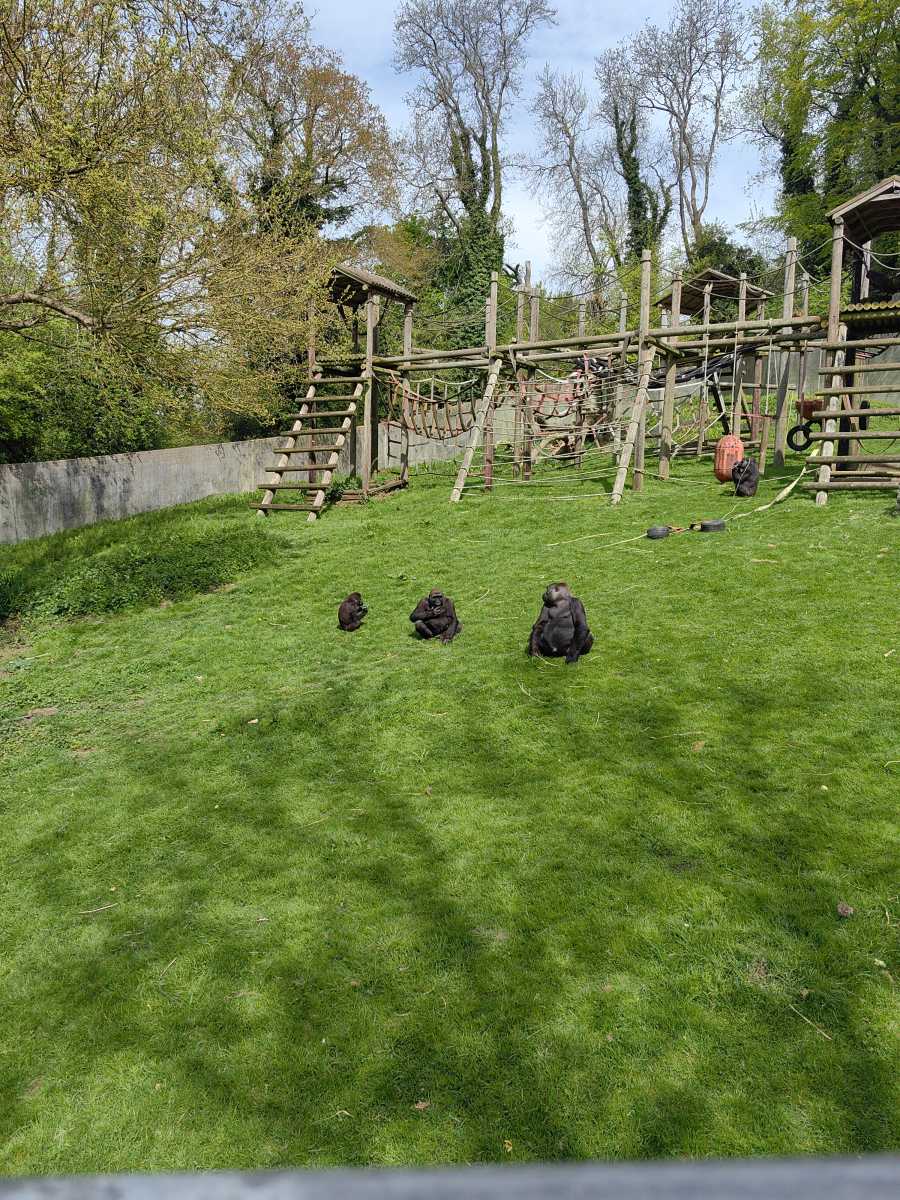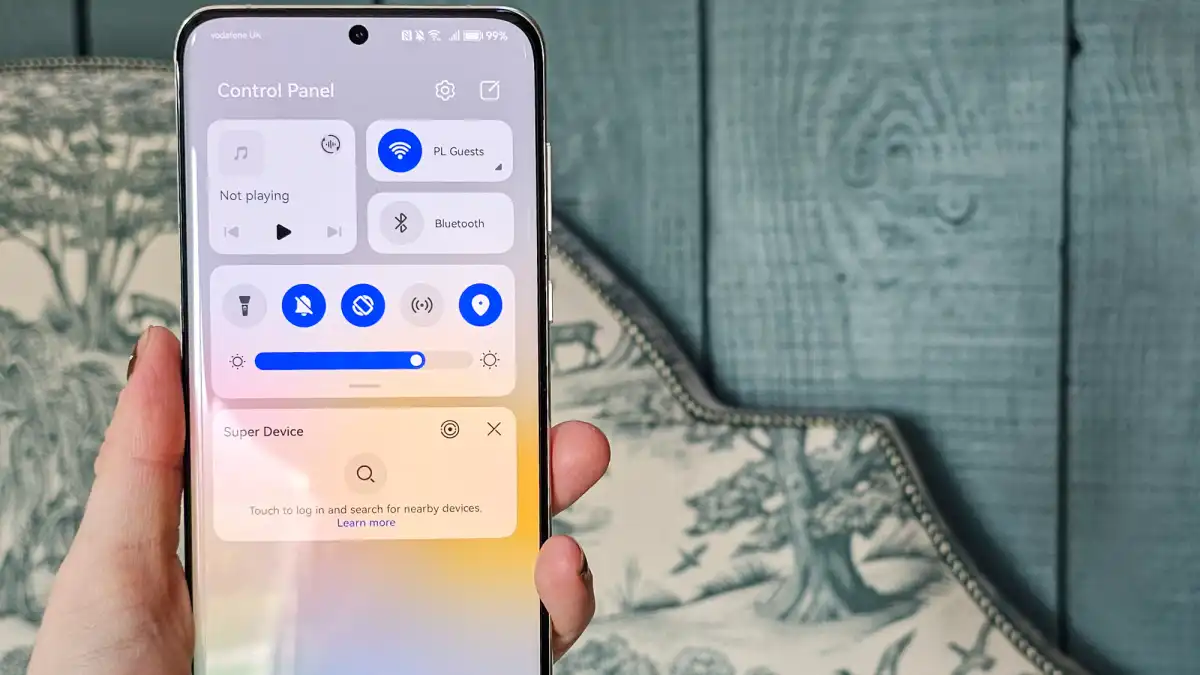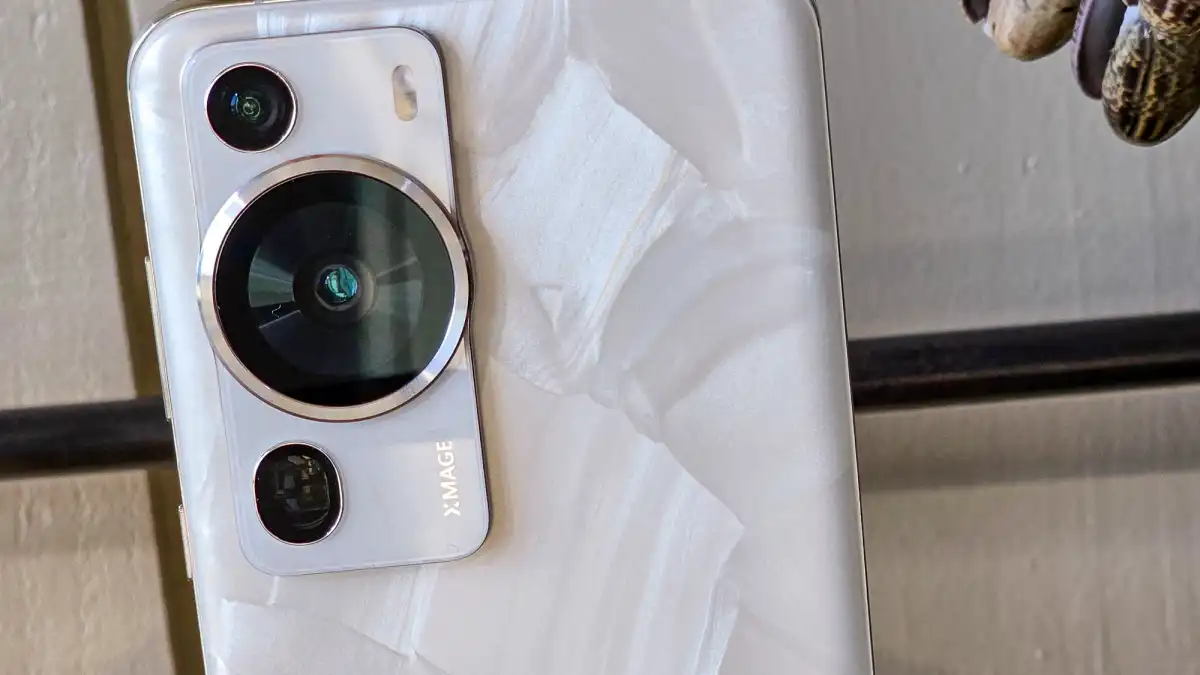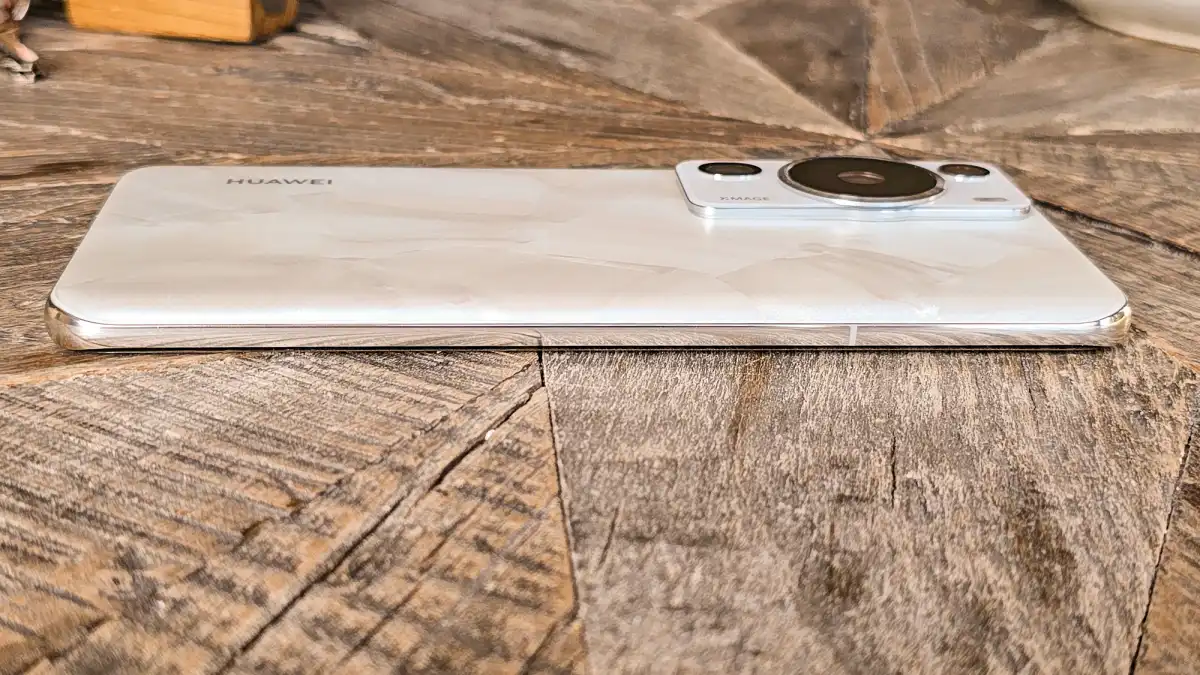Huawei’s P60 Pro was introduced in China in March 2023, but it has already arrived in the Europe.
The Pro version is presently the only P60 smartphone to be released internationally, and this year Huawei is focusing on low light and zoom photography, seeking to outperform the cameras on phones from Apple, Google, and Samsung.
Because it’s a Huawei phone, it doesn’t support Google services or the Google Play Store, which has a significant influence on software – particularly if you’re used to the standard Western Android experience. However, smartphone photography enthusiasts may still be interested in this model because it can shoot some of the greatest photos on a phone.
Design & Build
- Stunning Rococo Pearl finish
- IP68 rating
- No headphone jack
The Huawei P60 Pro comes in a choice of two colors: Black and Rococo Pearl. I tried the latter, which has a marble-like design that is unique to your smartphone – my unit was shaped differently than other versions I saw. It has a wonderful gloss to it and does not attract fingerprints like some other models.
The Rococo Pearl variant is £100/€200 more expensive than the normal black, so you’ll have to pay out for that lovely finish.
This looks and feels like a high-end, luxury phone, with a curved design that is simple to handle and operate. That is assisted by its low weight (200g), and narrow design (8.3mm), and it isn’t huge like other versions such as the Samsung Galaxy S23 Ultra and the iPhone 14 Pro Max.

The camera module sits on the left side, with the primary sensor dominating the design – a break from the Huawei P50 Pro’s two large round lenses. It does protrude, so the phone doesn’t rest completely flat when laid back down, but as you can see, it’s meant to appear and shoot like a camera in landscape mode.
There is one USB-C port, and a dual-SIM slot that also takes Huawei’s proprietary nano-memory cards for more storage. There is no headphone jack, which is to be expected for a phone at this price point. The P60 Pro has an IP68 rating, so it has a decent level of water resistance. Should you want further protection, Huawei includes a transparent case in the box.
Overall, Huawei has once again delivered a gorgeous premium smartphone with the P60 Pro that sticks out from the pack.
Screen & Speakers
- 6.67in 1220p display
- Kunlun glass protection
- Stereo speakers
The Huawei P60 Pro features a 6.67in curved glass display with a resolution of 2700 x 1220, which is high definition yet has a greater pixel density than regular HD 1080p. The quality is comparable to that of the iPhone 14 Pro, but not nearly as good as rivals such as the Galaxy S23+, which has a QHD+ display.
It looks fantastic. The colors are vibrant and eye-catching, making it ideal for watching videos. Under direct sunlight, there is some glare, but not enough to render the display unreadable. The always-on display is enabled by default and displays the time and notifications even when the screen is turned off, but you can disable it if you’re concerned about battery life.

Kunlun glass, Huawei’s in-house alternative to industry favorite Corning Gorilla Glass, is used on the phone. When the phone slipped off the sofa and landed on a ceramic plate, I accidentally tested this theory. Despite a terrifyingly loud clang, the phone was unharmed.
The screen boasts an adjustable refresh rate that can show between 1- and 120Hz, which combines sharp visuals with battery longevity. If you’re concerned about power, you can set the phone to high (120Hz) or standard (60Hz). The P60 Pro also has a touch-sampling rate of 300Hz, making it quick and responsive for gaming.
The phone has stereo speakers on the top and bottom. These are loud and punchy, with some music soundtracks having clearly defined bass, mids and highs. However, it does lack the same colors and punch that you’ll get on smartphones built with extra audio processing and beefier technology such as the excellent Asus ROG Phone 7 Ultimate.
Huawei has once again produced a stunning flagship smartphone with the P60 Pro
Specs & Performance
- Snapdragon 8+ Gen 1 chip
- 8GB/12GB RAM and 256GB/512GB storage
- No 5G support
The Huawei P60 Pro is powered by a Qualcomm Snapdragon 8+ Gen 1 CPU. The same processor can be found in the Samsung Galaxy Z Flip 4, Xiaomi 12s Ultra, and OnePlus 10T. This is combined with either 8GB of RAM and 256GB of storage or 12GB of RAM and 512GB of storage.
This isn’t Qualcomm’s most recent processor; it would be the Snapdragon 8 Gen 2 found in the Samsung S23 series, the OnePlus 11, and the Xiaomi 13 Pro. Nonetheless, the 8+ Gen 1 is an excellent chip. I was able to multitask with ease, broadcasting videos on Twitch and browsing social media with no stuttering or latency.
However, due to continuing disputes between Huawei and the US commerce sector, there is no 5G support — you’ll have to make do with 4G. When I was out and about, I did notice a difference, with online pages loading significantly slower than they typically do on my usual 5G phone.
Check out how the phone performed in comparison to rivals:
Cameras
- 48Mp triple camera perfect for low-light zoomed in shots
- Daylight images are equally stunning
- Wide-angle lens not as impressive
Huawei set out to impress with the P60 Pro camera, and it’s safe to say it succeeded.



The phone has a triple camera set-up led by a 48Mp main lens that has the same physical variable aperture tech seen on the Mate 50 Pro. It contains a movable component that lets you to pick four steps between f/1.4 and f/4.0 in the camera app’s dedicated Aperture mode. You may even go more granular with five simulated aperture steps.
As a result, the manual controls resemble those of a DSLR camera. Changing the aperture of the P60 Pro allows you to produce a natural background blur on nearby objects without using software, or open up the lens to capture more of a landscape photo while keeping all areas in focus. Being able to ramp up to f/4.0 also allows for more light to enter the camera, allowing for better images when light is scarce.

It’s certainly one of the most impressive photos I’ve ever taken on a smartphone camera – and I didn’t have to try too hard
Even in an almost pitch-black indoor environment, the camera managed to create a stable image using the software’s night mode, with colours elevated well without being too overdone or artificial. The night setting increases the light intensity in the room to produce a picture that isn’t true to life, but it’s still remarkable.
The slider image on the left is from the P60 Pro. You can see how a bouquet of flowers contrasts to the right-side image, which was captured with the Galaxy S23 Ultra, which struggled to focus in low light. The tones in the Samsung picture are likewise significantly murkier overall.


Aside from zoomed-in low-light images, the P60 Pro’s primary lens is a superb snapper. It handles colors effectively both inside and outdoors and catches fine details in materials such as fur and clothing. The AI image boosting (which is best used for low-light shots) doesn’t overblow the colors like it does on some lesser phones, and it still works well – whether you’re shooting outside or indoors.
There is a very Macro setting for shooting very close-up images with clarity, which focuses on ultra-fine textures. The phone’s focusing was fairly constant; it only suffered when there were various items in shot, such as a bouquet of flowers.
You may also use the Aperture mode to manually change the focus to your liking, but I found that the automated Super Macro mode worked well for most jobs.
There is also up to 100x digital zoom in addition to the optical zoom lens. When photographing beyond 3.5x magnification, the clarity suffers noticeably, with lines becoming somewhat fuzzier and hues becoming less true to life.
The 13Mp wide-angle lens pales in contrast to the two other lenses in terms of quality. While it is adequate for landscape or large group photographs, the colors become less realistic and the ultra-fine details are lost.
Portrait mode is ideal for photographing people or animals since the shades contrast much more strikingly than in standard camera mode. Furthermore, there is exactly the appropriate amount of blur, with no stray hairs smudging into the background.
The 13-megapixel front-facing camera offers a wide-angle setting, which is great for large group selfies. Surprisingly, the bokeh effect does not appear to activate automatically in portrait mode, and you must choose an effect in the camera app.

Video recording is possible in 4K, 1080p, and 720p resolutions at 30fps and 60fps. When shooting, the color balance isn’t quite as spectacular as it is on still images, with tones seeming more washed out. There is also some jolting while zooming in and out, something we noticed with the P50 Pro.
However, the microphones take up a good quality of audio, and the films remain substantially stable even when you move about.
Battery Life & Charging
- A day-and-a-half battery life
- 88W fast charging
- Wireless and reverse wireless charging supported
The P60 Pro comes with a 4815mAh battery. As far as flagship phones go, the battery life is superior to some competitors. On average, I spent around a day and a half broadcasting Twitch, shooting photographs, and utilizing Huawei’s Petal Maps.
If you’re taking a lot of photographs and videos with the brightness turned all the way up, the battery will naturally deplete faster.
The P60 Pro comes with an 88W brick and a USB-C cable for charging. This can charge the phone from 0% to 89% in 30 minutes, so even a five-minute charge should give you enough time to go out the door – just make sure you choose ‘turbo mode’ for the highest charging speeds.
Furthermore, it supports 50W wireless charging as well as 7.5W reverse wireless charging. It’s worth mentioning that the phone grew warm while fast charging, which is normal for phones with this technology but something to keep in mind when it comes to battery health in the long run. You may wish to switch off turbo mode and charge the phone slowly, since this has been demonstrated to inflict less strain on lithium-ion batteries over time than fast charging.

Software & Apps
- No Google support
- Lots of bloatware
And now we get to the most contentious aspect of this phone: the software. If you’re used to the Google ecosystem, like me, you’ll find the Huawei P60 Pro difficult to operate – but it’s not absolutely unusable.
The P60 Pro is powered by EMUI 13.1, an open-source skin built on Android. Instead of Google Play, Huawei utilizes its own AppGallery app store, which isn’t the most user-friendly – it’s crammed with adverts and lacks the clean finish that the Google counterpart has.
Furthermore, it lacks numerous popular Western programs such as WhatsApp, Facebook, Twitter, Netflix, and PayPal. You may still look for these in the AppGallery or on Huawei’s search engine, Petal Search, and the results occasionally include links to APK versions of these programs that you can download from other websites.
This is known as sideloading, and it is totally legal on Android, but it can be perplexing. While Huawei claims that it examines applications before installing them, there are still security issues because you’re not downloading from the Google Play Store, but from a third-party site.

I experienced some problems with APKs, such as Geekbench benchmarking downloading but refusing to install till I went to another site. The download links on the sites are likewise difficult to find. It’s an unpleasant user experience.
Apps functioned normally when they were downloaded and installed. I continued to receive alerts and had no problems with applications crashing. However, this is not suited for someone who is not extremely tech-savvy or is unfamiliar with how Huawei phones function.
If you’re used to the Google ecosystem like me, then you’ll find the Huawei P60 Pro quite hard going
However, not all apps will function as intended. Google applications require Google servers, so while they can be installed, they will not function normally, thus you will be unable to sync your Google calendar or sign into Google apps. You also can’t utilize Uber or Citymapper because their data is based on Google Maps.
Huawei does provide its own Google alternatives, such as Petal Maps, which I found to be accurate when it came to buses and trains in London. If you utilize Google applications, I recommend searching elsewhere.
Aside from the app issues, the Huawei P60 Pro has a layout that reminds me of Xiaomi’s MIUI in several ways. It uses Apple’s fast navigation for the notification shade, with a right swipe down from the top bringing up quick settings.

Huawei shares Xiaomi’s unpleasant tendency of introducing bloatware, with a slew of pre-installed applications and folders cluttering up the home screen – and some of them aren’t always easy to remove.
According to a Huawei spokeswoman, the phone will receive two years of Android platform upgrades, bringing it up to Android 15, as well as three years of security patches until 2026. This isn’t too awful, but considering the price of the phone, Samsung gives four years of upgrades and five years of security fixes.
To summarize, if the lack of Google services isn’t a barrier for you, the Huawei P60 Pro may be worth considering. Otherwise, this phone is difficult to operate, and competitors provide far more smooth experiences with simple access to the apps you are accustomed to utilizing.
Price & Availability
The Huawei P60 Pro is priced at £1,199/€1,199 for the 8GB model and £1,299/€1,399 for the 12GB model. Only the black edition in 8GB and the Rococo Pearl version in 12GB are available to UK readers. In Europe, each color is available in both variants.
It is now available for purchase at the Huawei Store in the United Kingdom and will be available from additional select retailers on May 22, 2023. Tech Advisor readers may save an additional 10% off the Huawei Store by entering the code A10P60PROOTH at checkout – this offer expires on May 31, 2023.
If you buy before June 5, 2023, you will receive a free Huawei Watch GT 3 as well as a £100 coupon to use in the Huawei Store.
It’s hardly surprising that the P60 Pro isn’t available in the United States. However, American viewers may be able to obtain one through AliExpress.
This is a high price for a phone, much alone one without Google services, and although the camera hardware on the P60 Pro is excellent, the software issues make it difficult to recommend over competitors.

Conclusion
There’s no denying that the Huawei P60 Pro has some serious camera technology, and if you’re looking for something that can snap close-up images in incredibly low light while maintaining plenty of information, this smartphone can’t be topped.
Furthermore, it boasts a magnificent sturdy design, a fantastic battery life with exceptional fast-charging technology, and sleek performance.
However, I would only recommend purchasing it if you intend to use it primarily as a second smartphone camera in addition to your primary phone, or if the lack of Google services isn’t a huge worry for you.
If that’s not the case, the Huawei P60 Pro is difficult to operate, with many apps requiring sideloading and some services just not available. It’s a pity, because it tarnishes what could have been a true flagship competitor.
Specs
- Qualcomm Snapdragon 8+ Gen 1 4G
- EMUI 13.1
- 6.67in 120Hz OLED display
- 8/12GB RAM
- 256/512GB storage
- Nano memory card expandable
- 88W wired charging
- 50W wireless charging
- Camera:
- 48Mp f/1.4-f/4.0 main camera with OIS
- 48Mp f/2.1 telephoto camera with OIS
- 13Mp f/2.2 ultrawide camera
- 13Mp f/2.4 selfie camera
- Wi-Fi 6
- Bluetooth 5.2
- 161 x 74.5 x 8.3 mm
- 200g
- Black or Rococo Pearl


